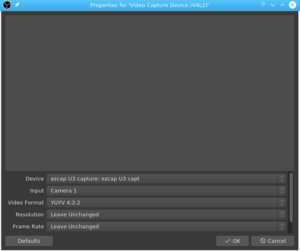Isabel recently asked some questions about serving on the Apache Software Foundation board of directors. Here’s my responses:
Which areas were a lot of fun for you?
This is a difficult question. I really can’t say that I serve on the board because it’s fun. Rewarding, yes. But not fun. It’s hard work (if you do it right). It’s time consuming. It’s frustrating. It makes some people angry with you. It brings out the very best in some people, and the very worst in others.
I’m very, very proud of being on the ASF board. Sitting in the company of these great women and men reminds me, often, that I came to this by chance, luck, fortuitous timing, and a lot of hard work, rather than by talent or accomplishments.
But I honestly can’t say that it’s fun.
Which parts were particularly educational for you?
The ASF has 200 projects, which are in every area of technology. We say that Apache is “tomorrow’s software, today.” And we have been inventing the future since the early httpd days.
Today, every area of technology that you care about has some of its origins in the ASF. (Sure, that’s probably an exaggeration, but not by much.)
Every piece of technology you use, every day, has some Apache in it. (This might also be an exaggeration, but I doubt it.)
All that to say, there are very few places at the ASF where you actually get to encounter all 200 of these projects. Those places are probably Infra, and the Board. These are the places where you are forced to learn what all of these projects are from a tech perspective, and how they operate from a social/community perspective. Every month I am reminded of a project that I had all but forgotten about – because there’s just so many of them.
Are there any parts of being a board member that you could imagine helping with even after stepping down?
Honestly, almost all of them. But being on the board forces you to remain engaged, while, when you’re not on the board, there’s no penalty for letting them slip.
Any member can review PMC board reports and make comments on them. Any member can step up to provide mentoring and advice to projects that are struggling. Or even pitch in to solve technical problems, and thereby earn committer rights on that project.
Any member can provide thoughtful commentary on any board thread. Or dig through past archives for commentary already provided by previous generations of members and directors.
We have several former Board members who do this. Jim Jagielski, Greg Stein, and Roy Fielding come to mind as examples of this. And when they speak up, their input is always greatly valued because their past experience, combined with the perspective of stepping away for a moment, lend it more gravitas.
Which areas were particularly time costly for you?
Reviewing PMC reports can take as much, or as little time, as you’re willing to give it.
Certain former board members have mocked the PMC report review process, calling it empty rubber stamping. Other board members review the private@ and dev@ lists of each reporting project, every time, and make remarks like “This thread should have been on a public mailing list” and “Your report should have included a mention of this thread.”
Really, you can go to either extreme, but most of us fall somewhere in the middle, while varying from month to month based on time availability. Over all, each report seems to get adequate coverage most months, based on the average of board members.
I try, with each report, to check their previous report, see if there are unanswered concerns, and have a skim of at least the subject lines on the private mailing list for the past quarter.
Which areas were energy costly for you – didn’t necessarily take a lot of time but were definitely not fun to deal with?
Over the years, we have had a number of projects that don’t really get the ASF. It is the job of the board to nudge them gently back into the Apache Way when they stray too far. That’s usually not a big deal.
However, we have had other projects, or, at least, individuals within projects, who actively resist the Apache world view, working against it whenever possible.
This takes many forms.
We have had PMC members attempt to purge other members and committers who aren’t “pulling their weight”, or who are “stealing credit” by remaining on the committer list after becoming less active in the project.
We have had corporations attempt to cast the work of an Apache project as being owned, invented, or driven by that company.
We have PMCs that go either entirely rogue, or entirely AWOL, and simply refuse to respond to our queries or demands.
In these cases, it can take not only a great deal of time, but also a great deal of emotional energy, to try to guide these projects back into the right path. Particularly when that guidance is actively resisted, and, at times, mocked and ridiculed.
Now, granted, not all projects should be at Apache. Not all projects can or should fit into the way that we do things here. But if a project has decided that this is where they should be, and has endured the process of the Incubator, they cannot claim that they didn’t know what they were signing up for, and should be willing to work within those constraints.
I wish I had known this before joining the board
I wish I had known that I’d have to do budget stuff. Ye gods, I hate doing budget stuff.
In your opinion – what are the strengths of the ASF board?
The boards that I have served on (well, most of them anyway) have had a diversity of opinions, which we were able to express courteously.
(This has not universally been the case in every board term in the history of the Foundation, as illustrated by many amusing anecdotes which I cannot share here.)
There are people that served on the board with me, with whom I regularly disagree. That’s not to say that they are *wrong*, just that I often disagree with them.
The ability to discuss these opposing views, and sometimes persuade one another, is hugely valuable, and is something largely missing from public discourse these days. This is why I value it so much when I find it.
Even more important, the ability to disagree courteously, and still be able to stand one another, is a huge strength.
In your opinion – what are areas for potential improvement for the ASF board?
We are inexorably approaching the point where the number of projects makes quarterly reporting difficult to keep up with.
If you look at the board agenda, board reports are assigned agenda names alphabetically, like, Attachment A, Attachment B, and so on. During my first term on the board, for the first time we moved past Z and had reports AA, AB, and so on.
In the March 2019 board meeting, the last report was BX.
This is still manageable, if projects get their reports in on time, and directors start reviewing them early enough. But it’s getting tough. I have to pretty much plan an entire day to read board reports.
I don’t know what the solution to this is. There have been several proposed, but I don’t know that any of them are really ideal. We’re open to suggestions. The two most commonly proposed (more directors, more frequent board meetings) are not popular, for a number of reasons.
In your opinion – what changes should be made to the way the ASF board operates, interacts with communities, interacts with the wider ASF ecosystem, interacts with the public?
I don’t really have an answer to this. I think we’re doing find on this front, but, as always, we’re open to suggestions.
Any advice for new board members – where to look first, what legal implications to keep in mind, what PR implications to keep in mind etc.? What are the tasks and time commitment?
1) Attend board meetings, and read the board list, for several months before considering a run for the board. You may have an idea of what’s involved in being on the board, but actually watching it in action is eye opening.
2) When you’re on the board (or, indeed, when you’re a VP of the Foundation) every word you say is *heard as* the voice of the Foundation. It’s not, necessarily, but it’s heard that way. You don’t get to have your own personal views, and then claim that you’re not speaking on behalf of the Foundation. This is because, when you speak, reporters (and Twitter, and Facebook, and random conference attendees, and people just looking for dirt) will see right past you and attribute your views to the Foundation at large. “ASF Director and VP of Whotsits mumble mumble said today …” Every time I see my name show up in a Google Alert, my very first thought is “What stupid thing did I say this time?”
3) If you think “as a Board member, I could do X”, consider just going ahead and doing X, as an ASF member. There’s almost nothing that you can do as a Board member, which you cannot also do as a member of the Foundation.
Tell us about a moment from your time on the ASF board that is most precious to you.




